sharp quiz 4
1/29
There's no tags or description
Looks like no tags are added yet.
Name | Mastery | Learn | Test | Matching | Spaced |
|---|
No study sessions yet.
30 Terms
False. The mesial cusp slope is usually shorter than the distal cusp slope for both the maxillary and mandibular canines when they first erupt. The mesial cusp slope of a maxillary canine occludes with the distal cusp slope of a mandibular canine. The length of these cusp slopes and position of the cusp tip can change with attrition.
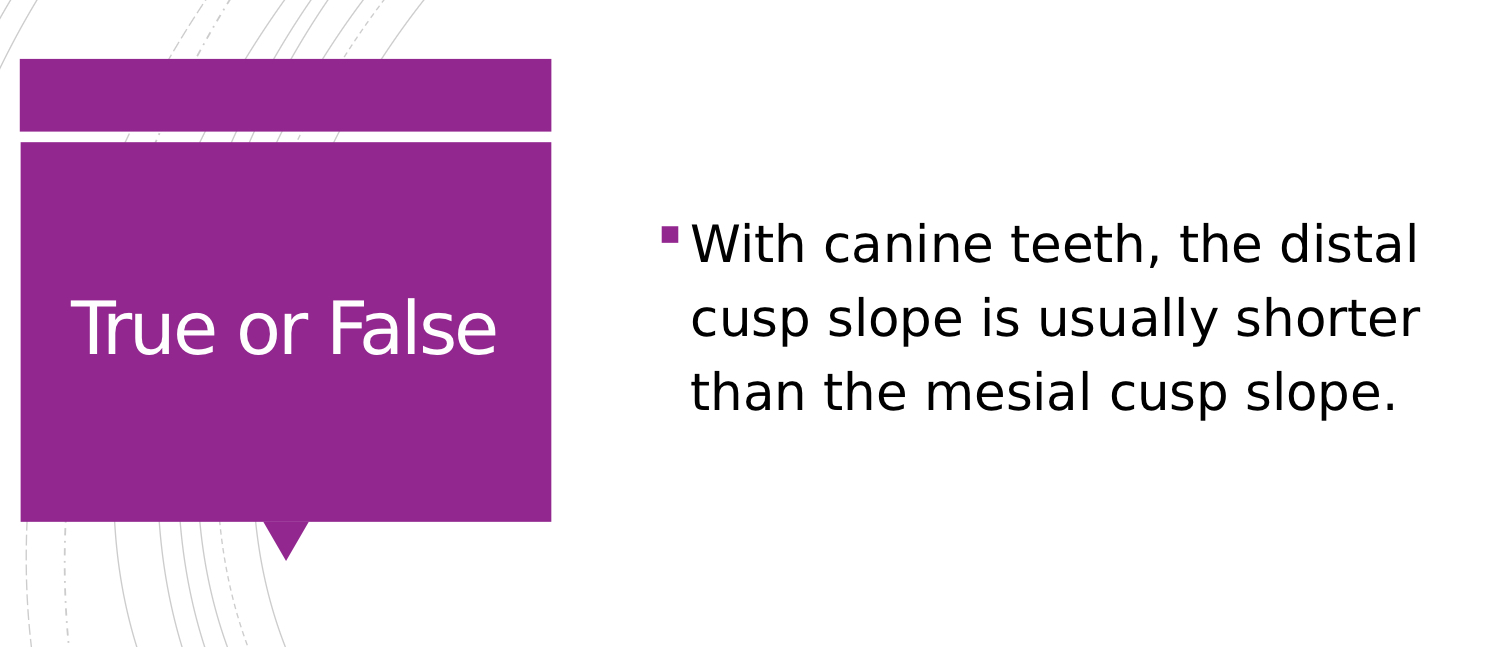
Marginal ridges
1
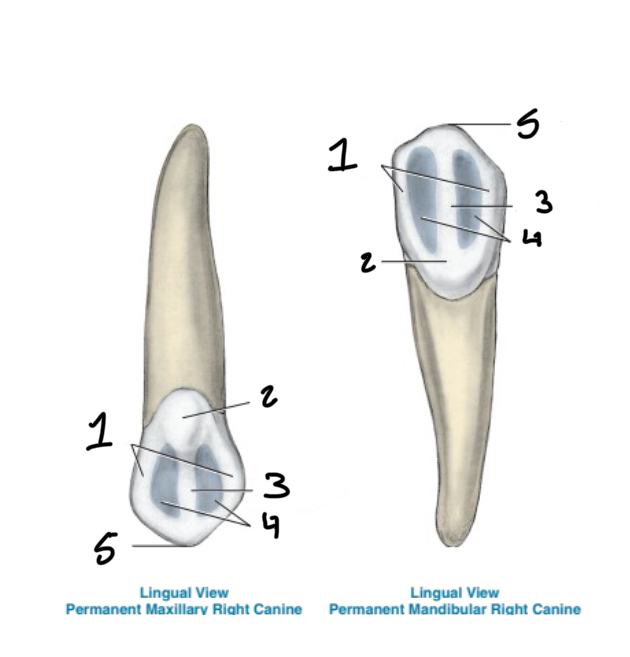
Cingulum
2
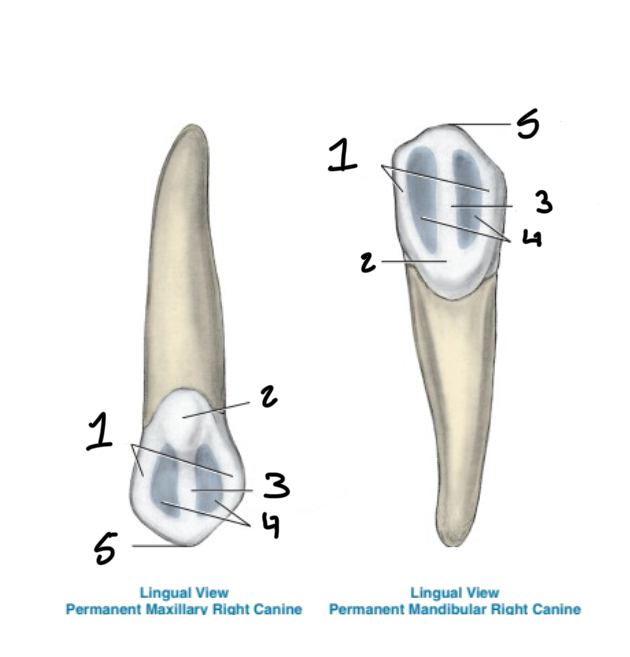
lingual ridge
3
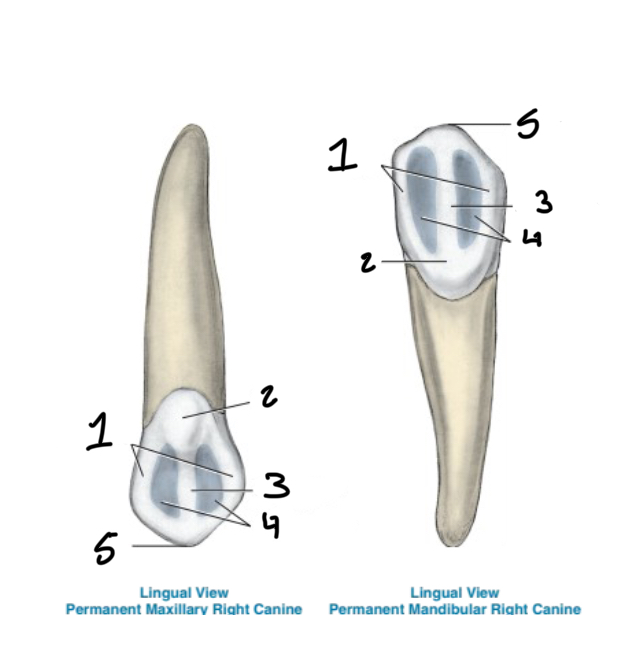
Lingual fossae
4
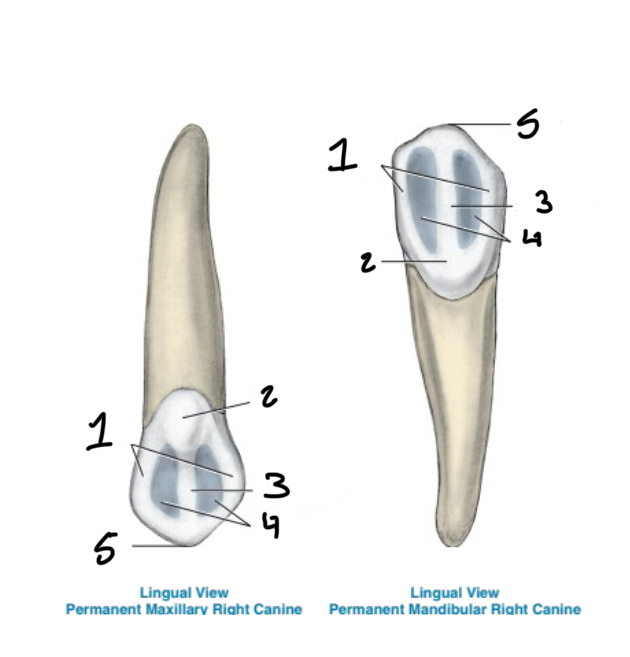
Cusp tip
5
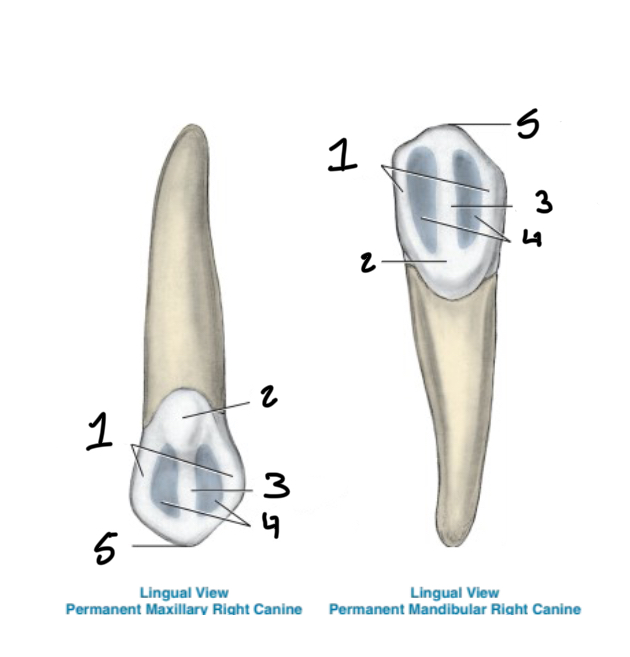
C.it is a ridge that runs vertically along the facial center third of canine teeth The canines are the only teeth in the permanent dentition with a vertical and centrally placed labial ridge. This labial ridge is a result of greater development of the middle labial developmental lobe in comparison with the mesial and distal labial developmental lobes.
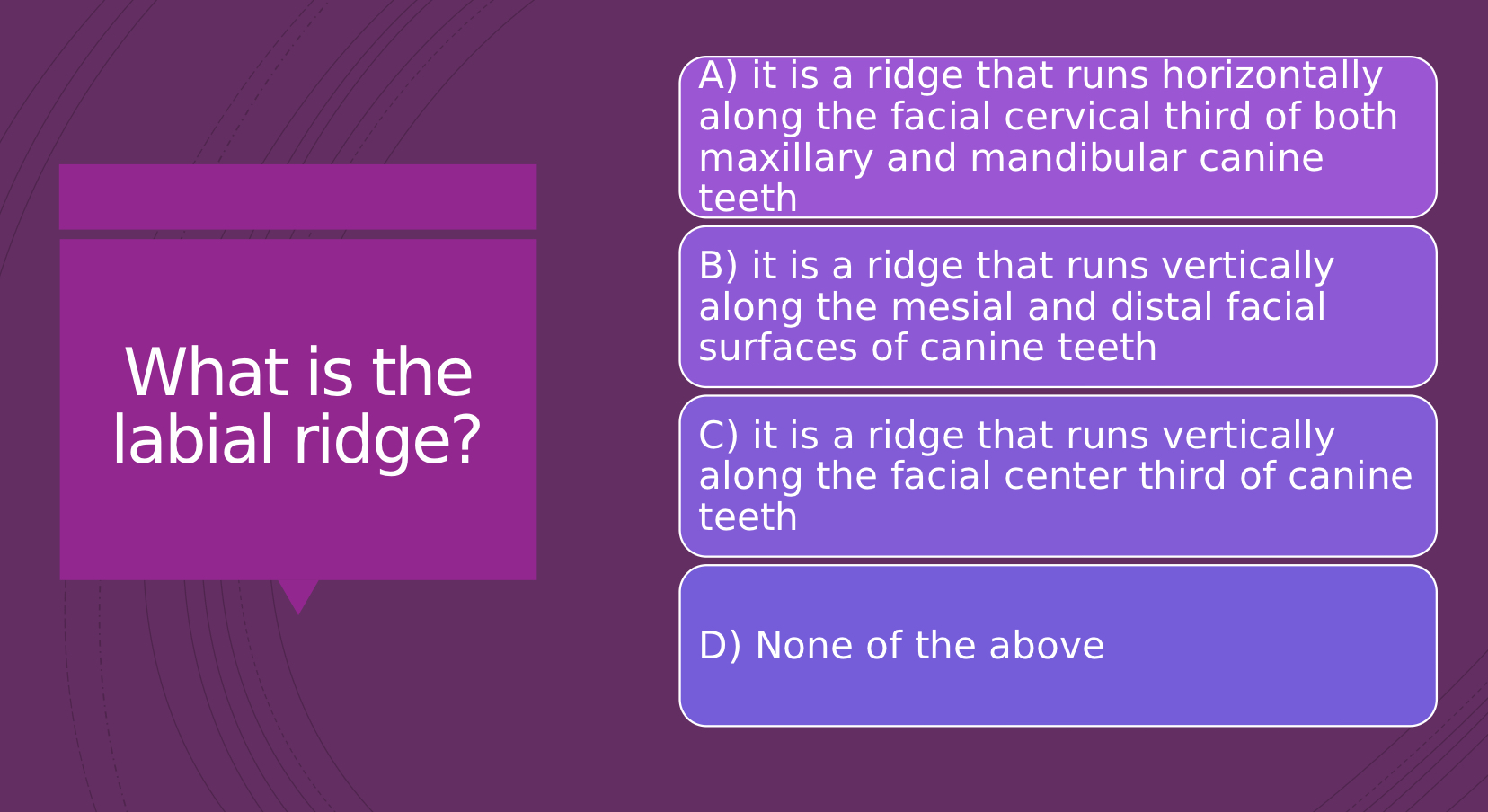
D) NONE of the above The lingual ridge is directly in the center third of the tooth and runs vertically The lingual ridge extends from the cusp tip to the cingulum
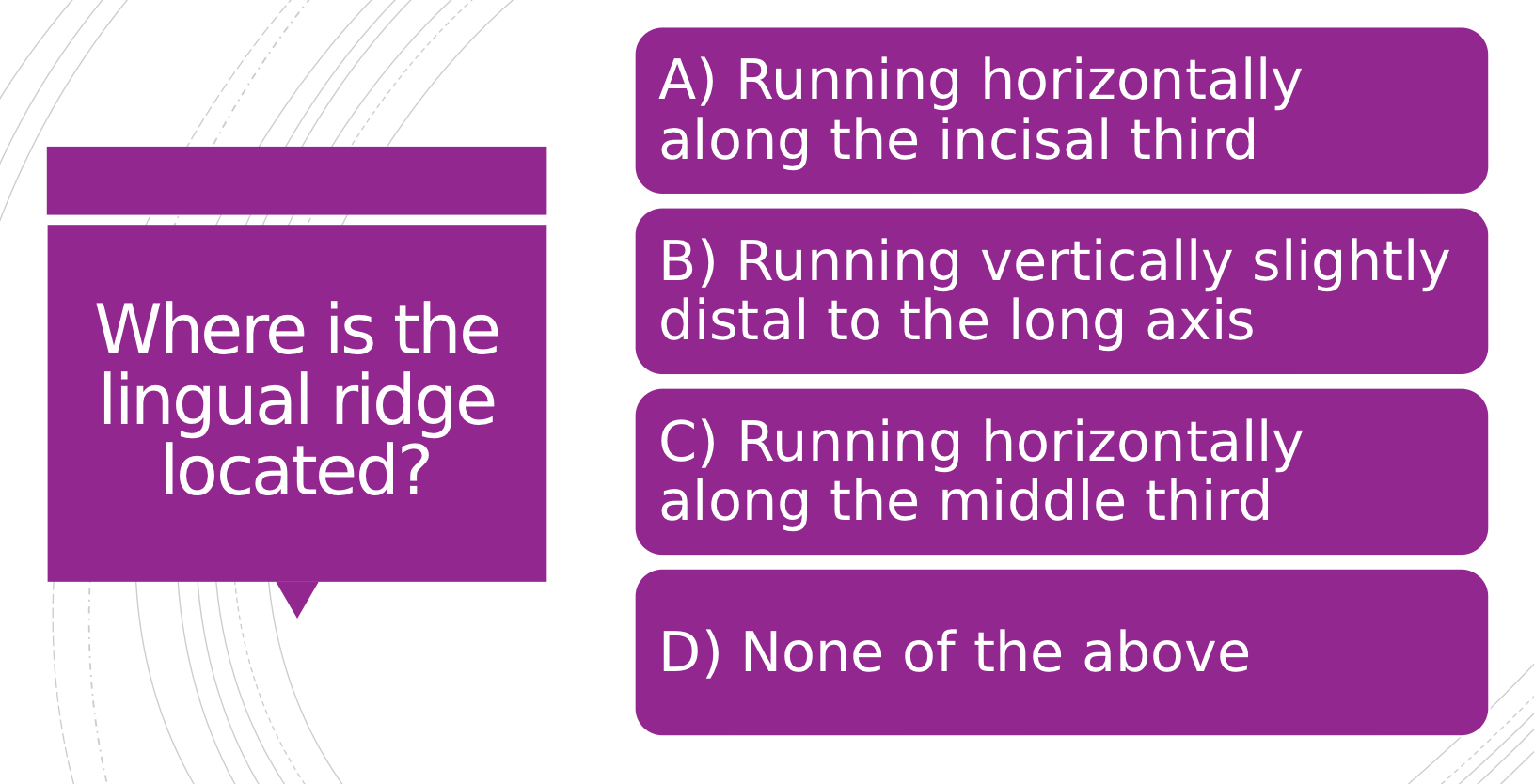
TRUE Although both the maxillary and mandibular canines have two fossae, the maxillary canines have more pronounced anatomy The lingual anatomy tends to be more defined on maxillary canines versus mandibular canines This includes the cingulum, lingual ridge, and marginal ridges
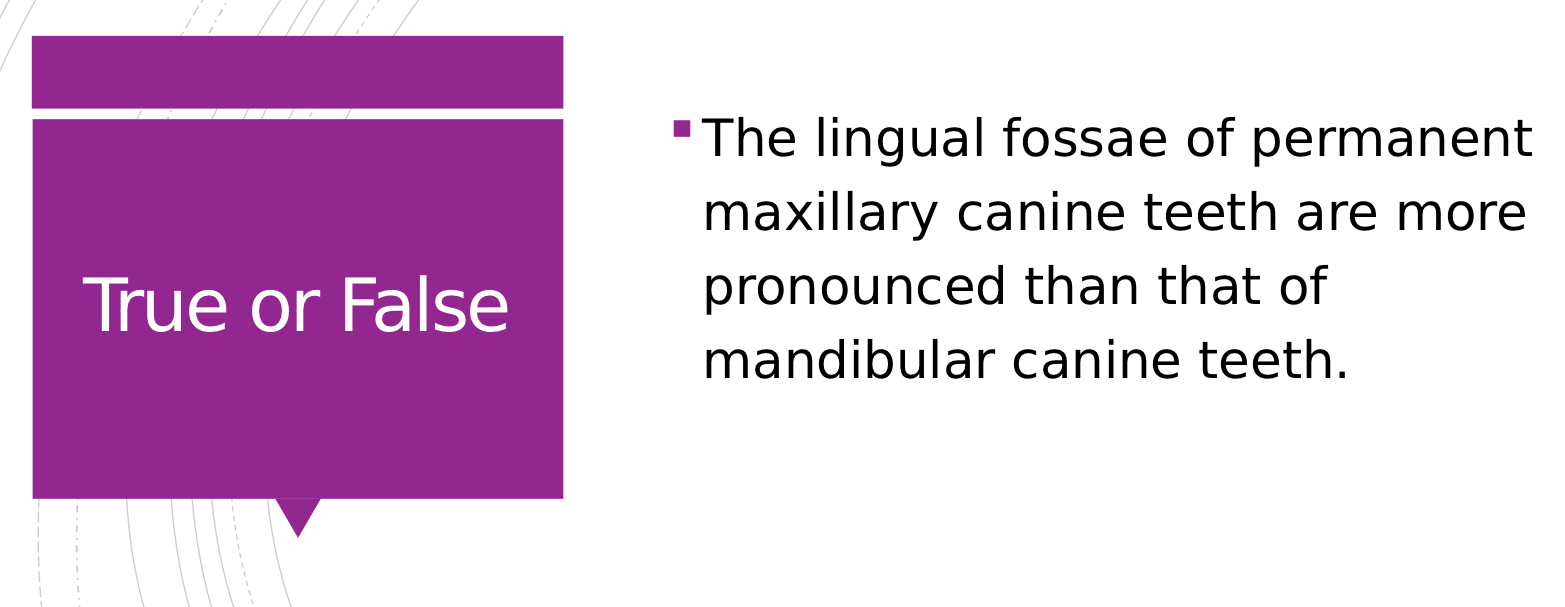
D) 4 Just like all other anterior teeth, there are 4 developmental lobes 3 on facial 1 on lingual
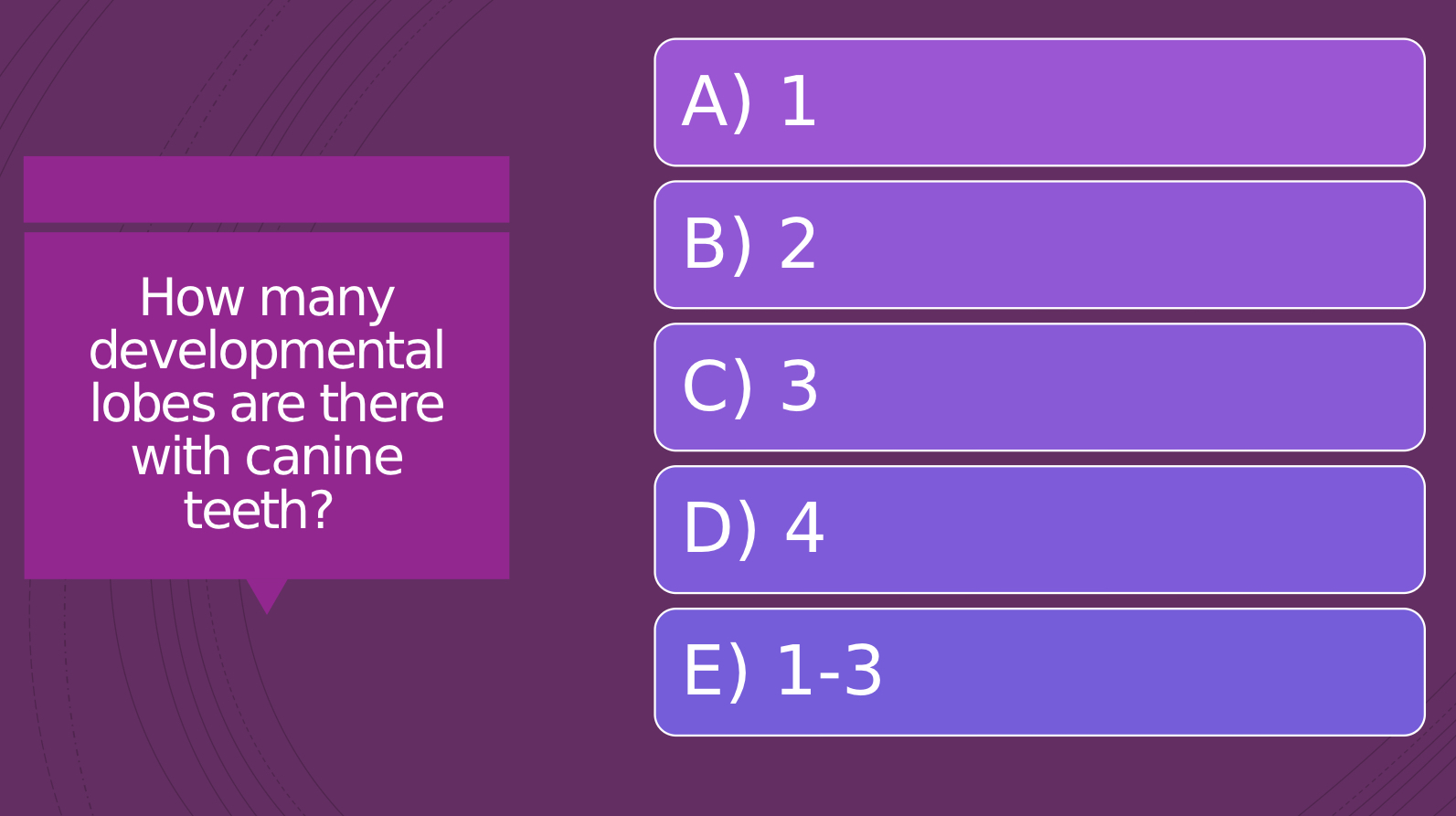
A.) 1 . Because the canine has one cusp tip, pulp horns often resemble the lobe pattern
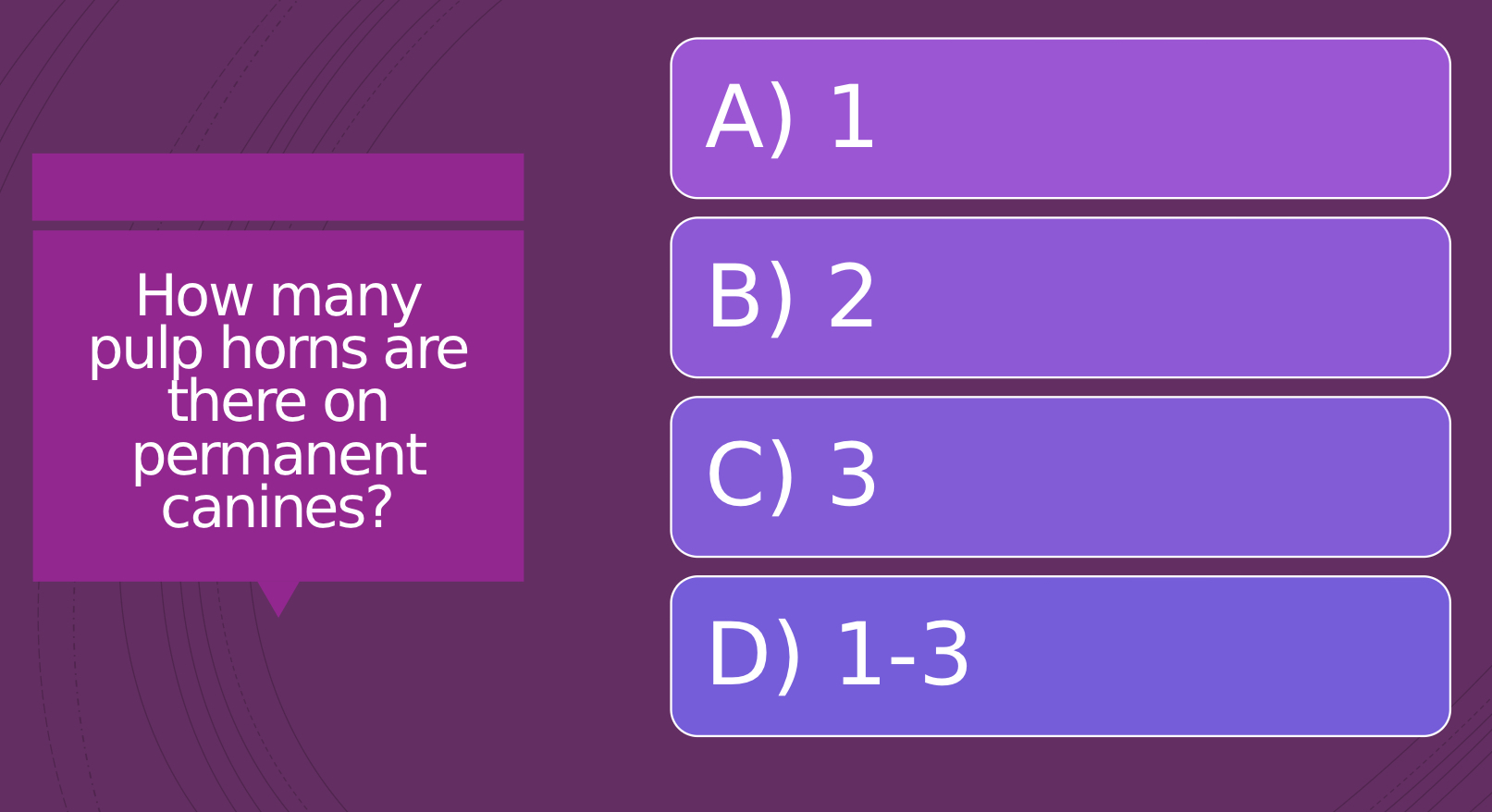
B.) between 9-10. the root completion is between 12 and 14. these teeth usually erupt before the macillary canine and after most of the incisors have erupted
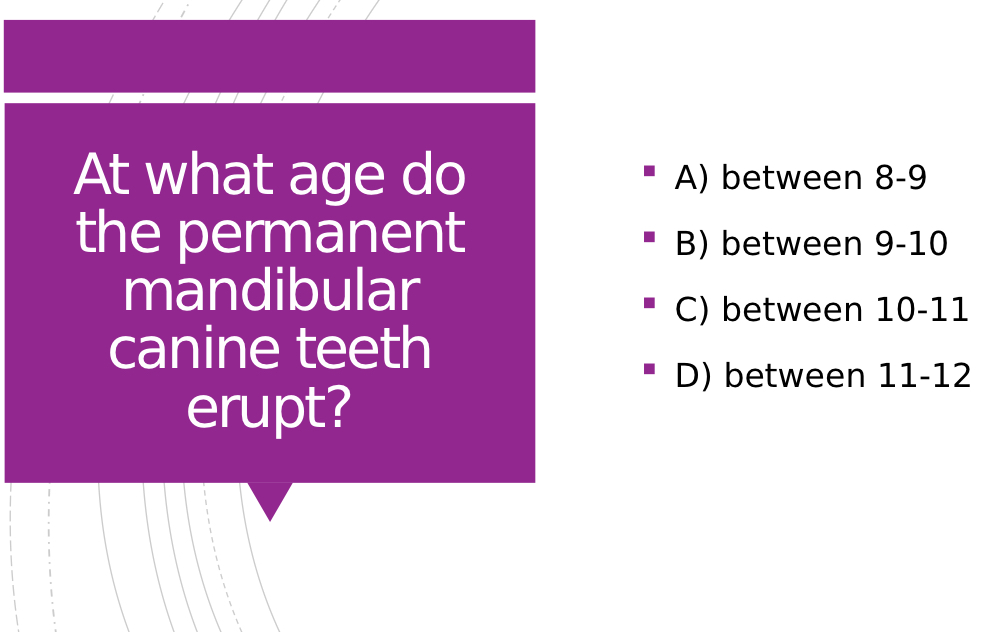
C) between 11-12 Root completion is between 13 and 15 These teeth usually erupt after the mandibular canines, after the maxillary incisors, and possibly after the maxillary premolars
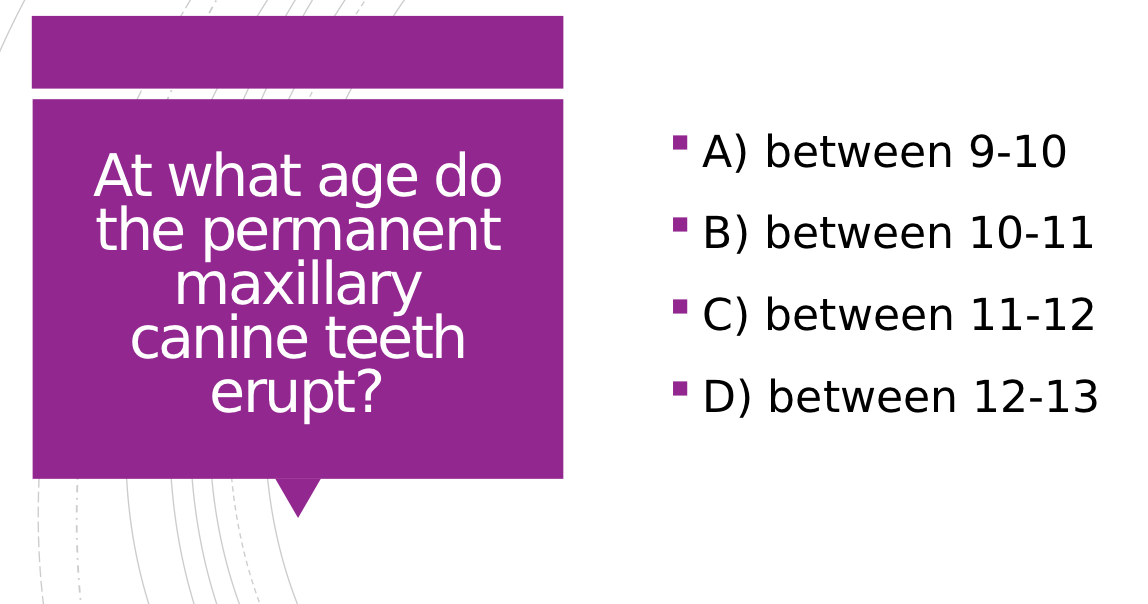
2) The crown is considerably wider LL than that of a central incisor, but a canine crown is noticeably narrower MD. This means the tooth is wider when viewing from proximal, but narrower when viewing from labial or lingual
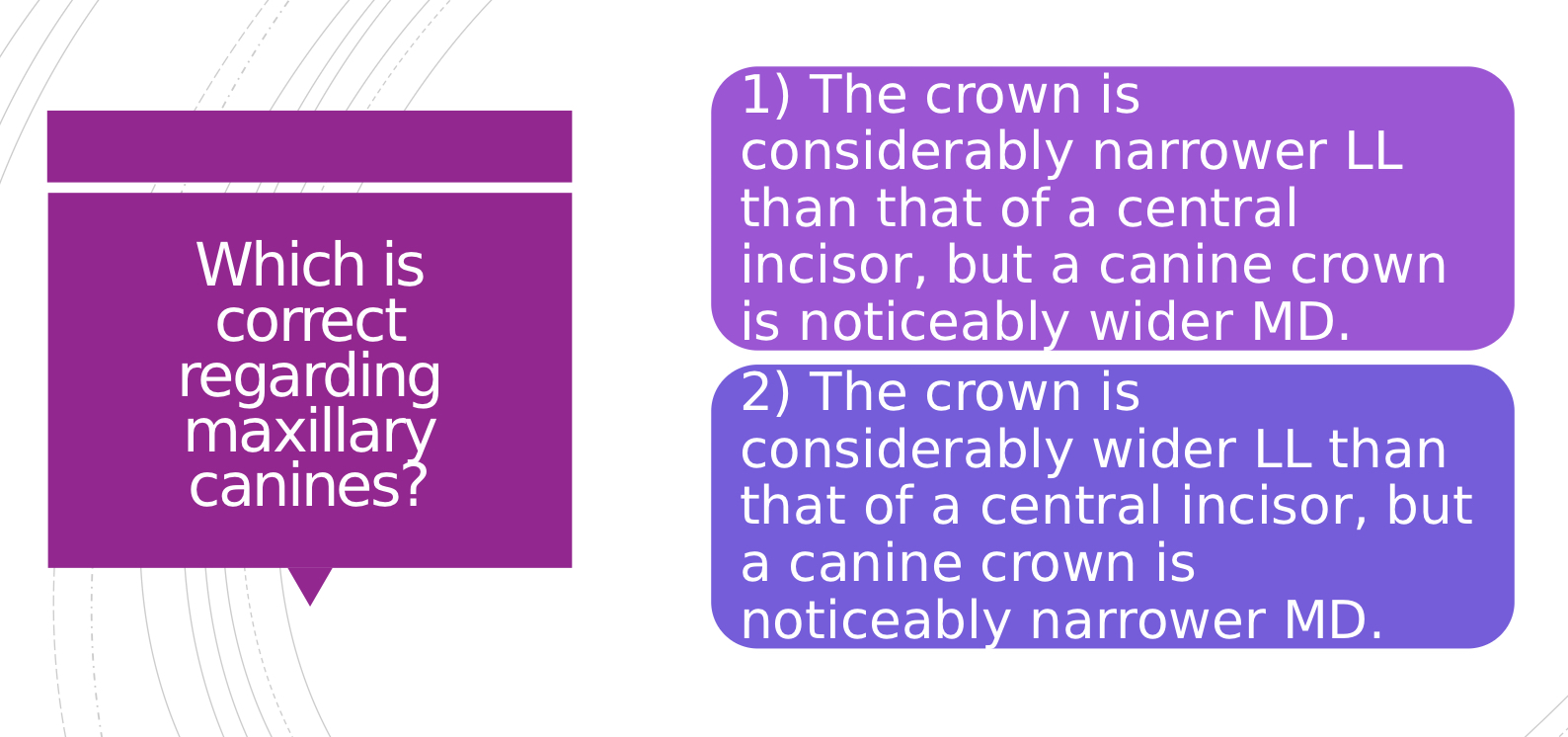
FALSE Just like the central and lateral incisors, the curve of the CEJ is still deeper on the mesial
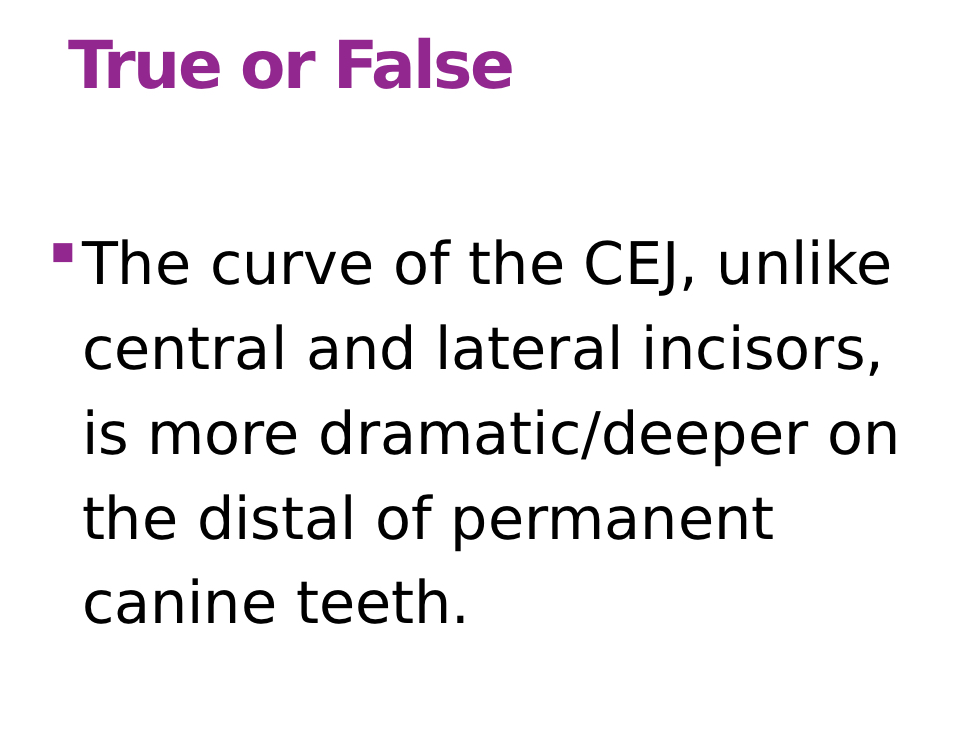
Mandibular canines could potentially be bifurcated in the apical third

3.) 10mm
A
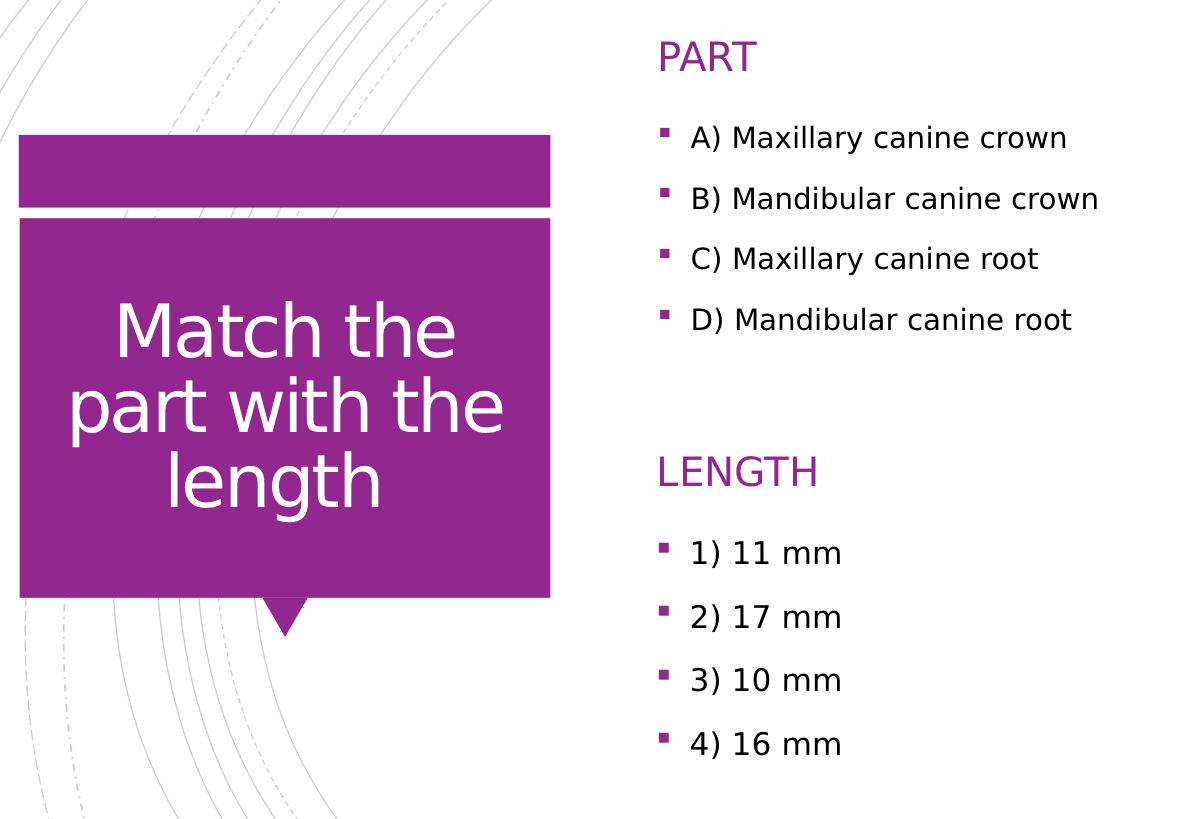
1.) 11mm
B
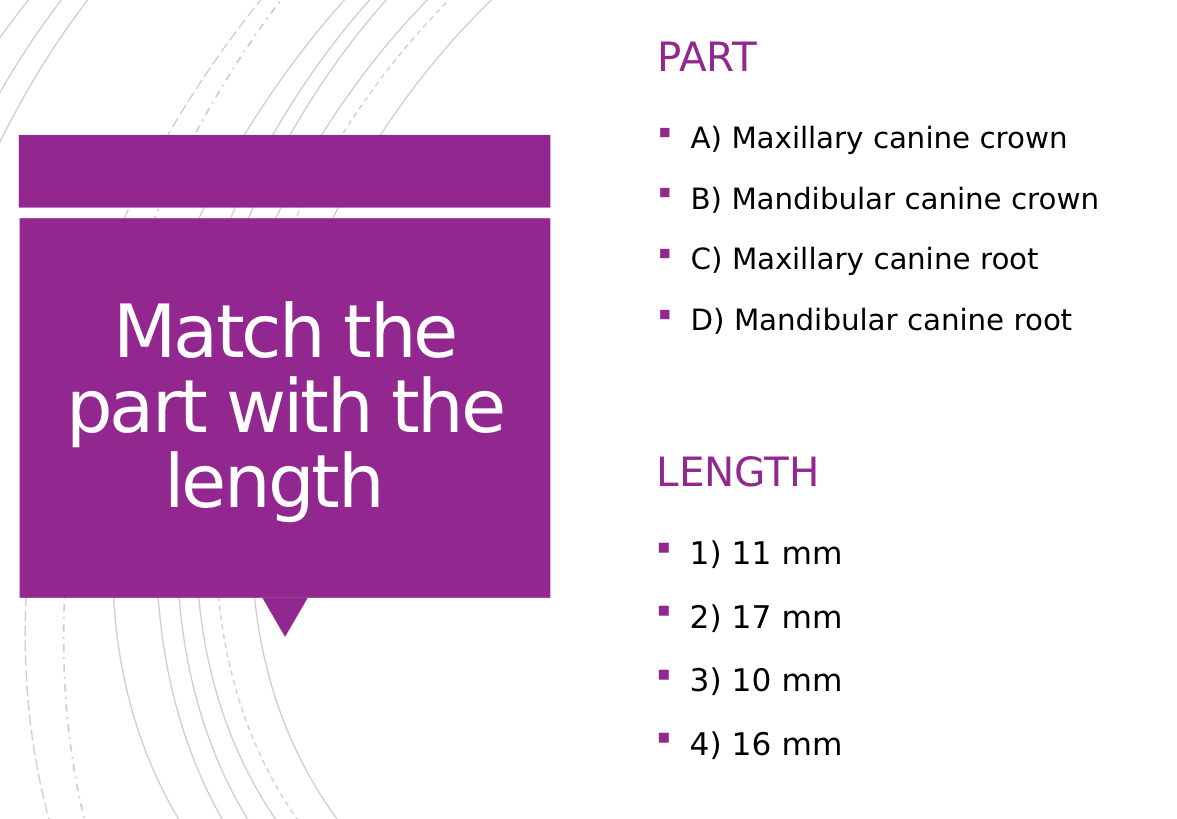
2.) 17mm
C
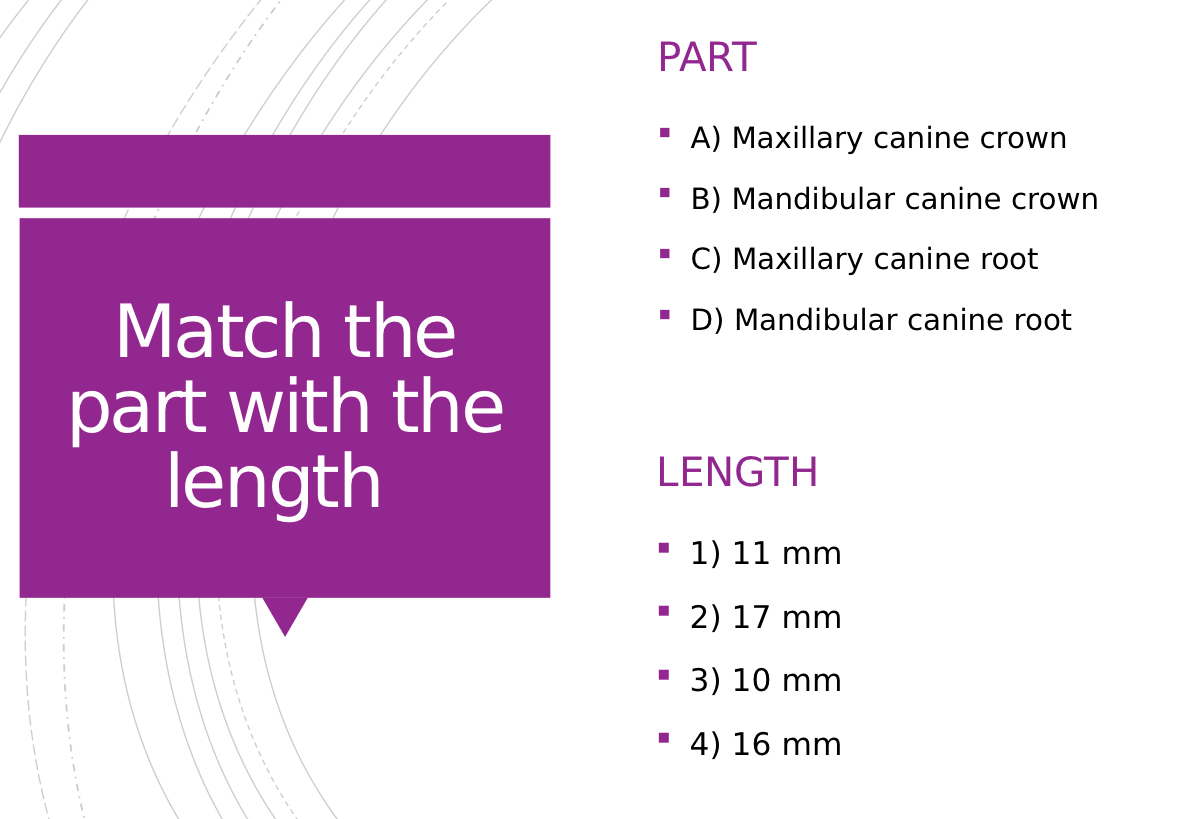
4.)16mm
D
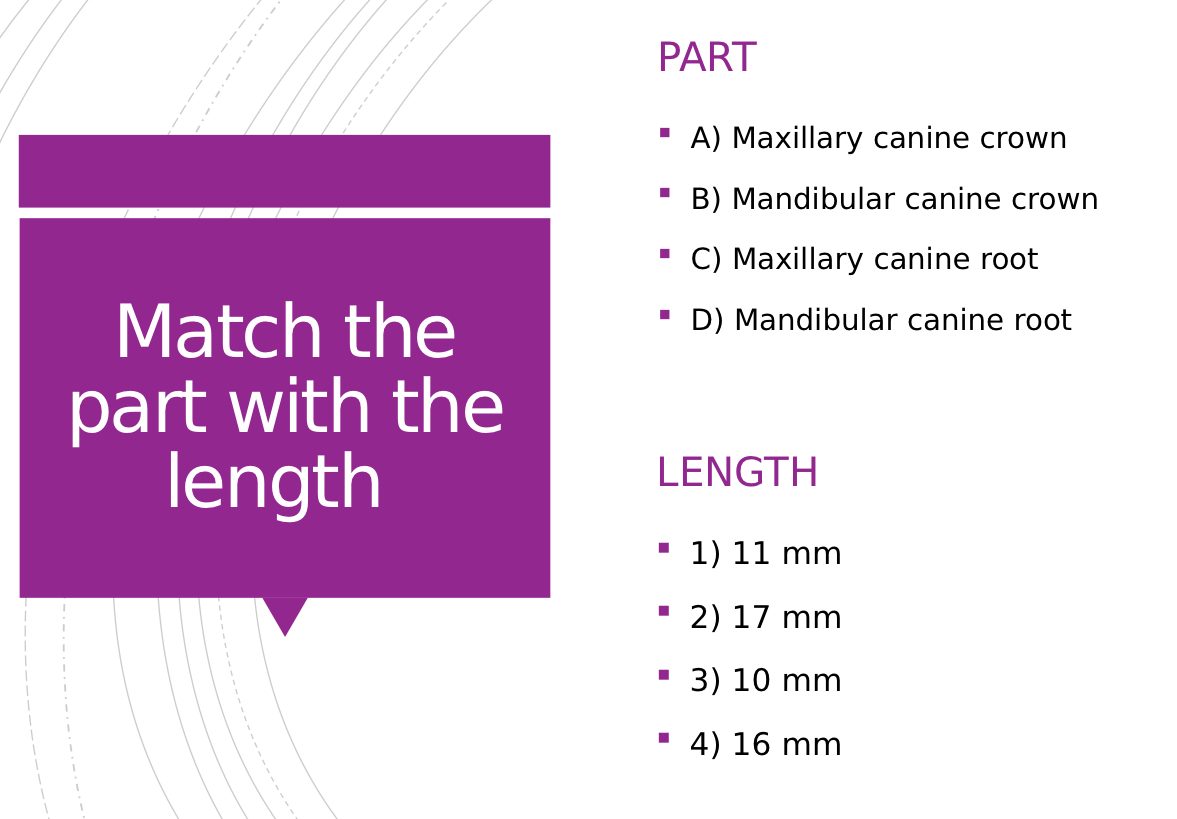
Long axis of teeth
a two- dimensional imaginary line that passes through the cusp tip or the middle point of the crown and the apex or middle point of the root
Cusp Tip
which is in line with the long axis of the root for both maxillary and mandibular canines when first erupted
Cusp Slopes
incisal ridge split into two
labial ridge
The canines are the only teeth in the permanent dentition with a vertical and centrally placed …
Major support of facial muscle, vertical
Because of their arch position, the canines serve as a … and keep the overall … dimension of the face intact
Cornerstones
Anatomists consider the canines the … of
the dental arch because of their arch position, tooth
form, and function
longer
The distofacial ridge is … and more rounded than the mesiofacial.
Maxillary Canine
Erupt betwen ages of 11 and 12. Root completion between 13 and 15 years.
Mandibular canine
Eruption between 9 and 10 years. Root completion between 12 and 14
shorter and rounder
The distal outline is s…than the mesial outline, similar to that of a maxillary canine, which helps to distinguish the right from the left